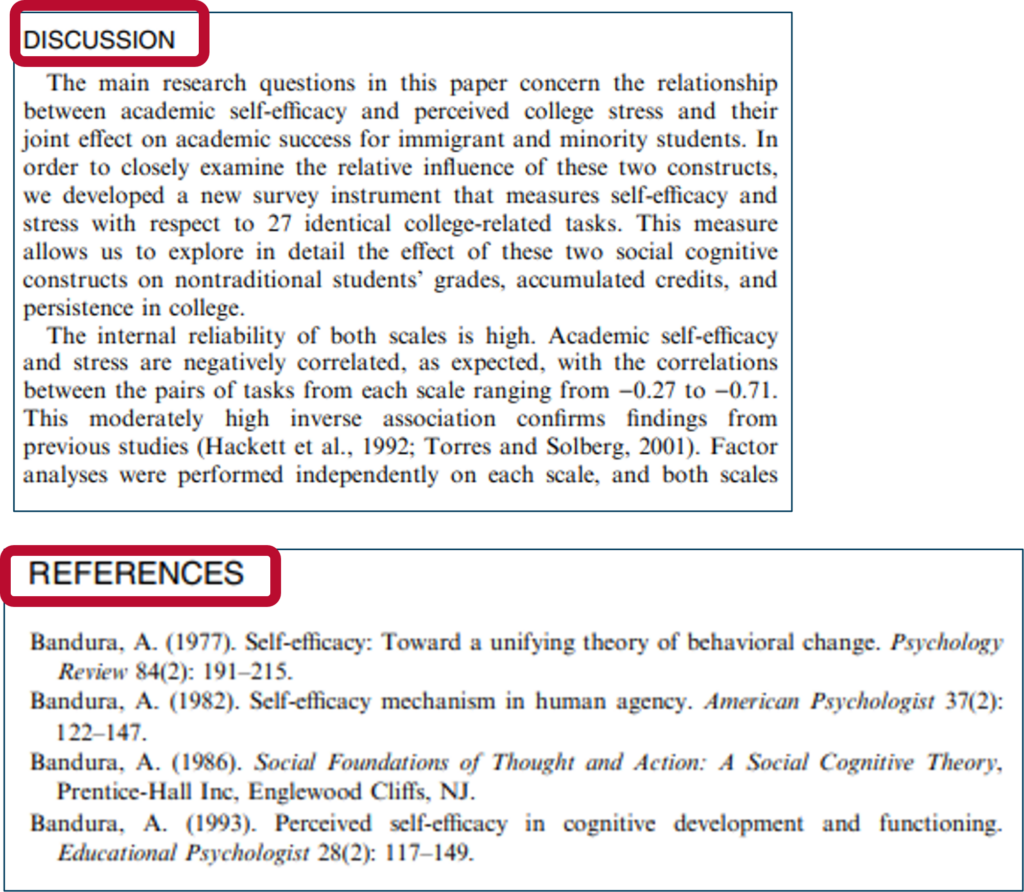Anatomy of a Scholarly Article
Scholarly journals are often referred to as peer-reviewed* journals, academic journals, or research journals. *A peer-reviewed journal article is one that experts in that field have read and approved for publication.
purpose
The purpose of scholarly journals is to educate and share information and research between scholars in particular academic disciplines.
subject matter
The subject matter of scholarly journals is highly specific, specialized, and presented in lengthy, in-depth articles.
LANGUAGE
The language used in scholarly journals is appropriate for academic discussions. Articles contain complex terminology, jargon, and sometimes mathematical formulas.
components of a scholarly article
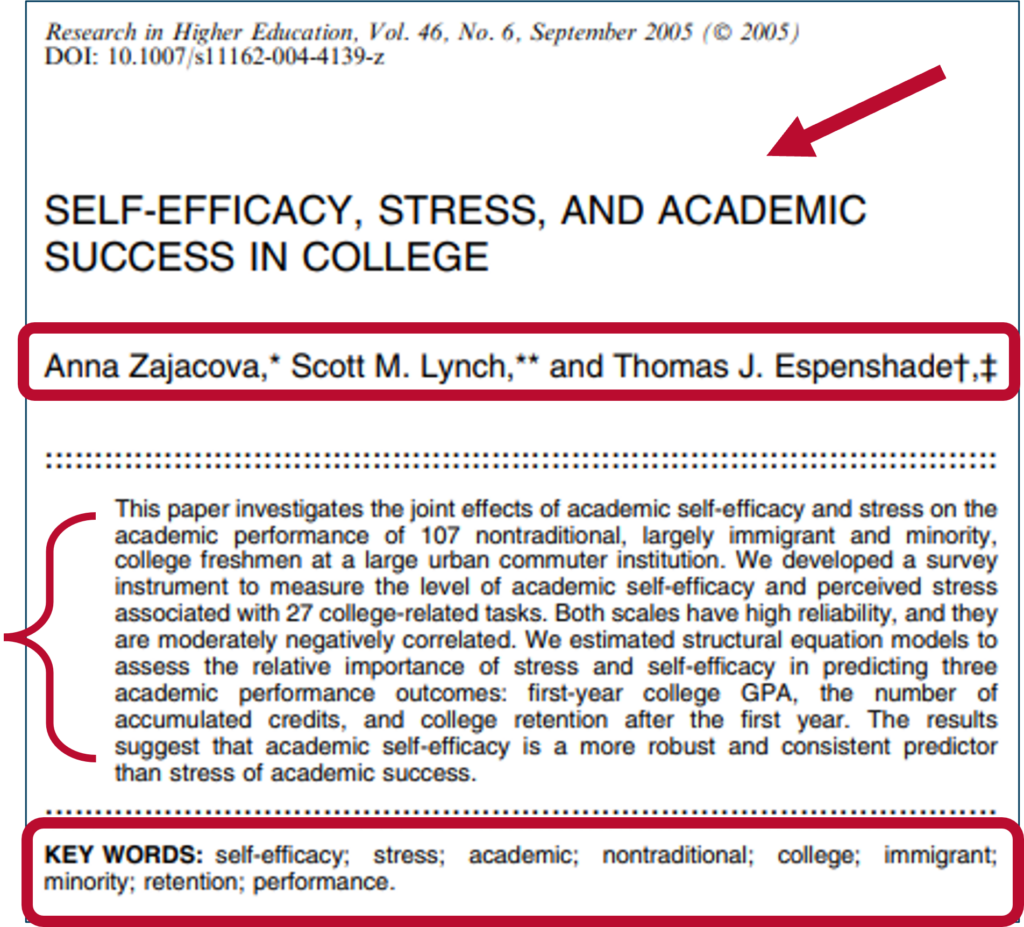
The article title is often a brief synopsis of the article’s contents.
An abstract (or brief summary) of the article is provided. Keywords are also sometimes offered.
The article starts with an introduction to the research being presented. This may help determine the usefulness of the article for your research.
Credentials and contact info help establish the credibility of the authors.
Publishers of scholarly journals are usually educational institutions, non-profits and professional organizations.
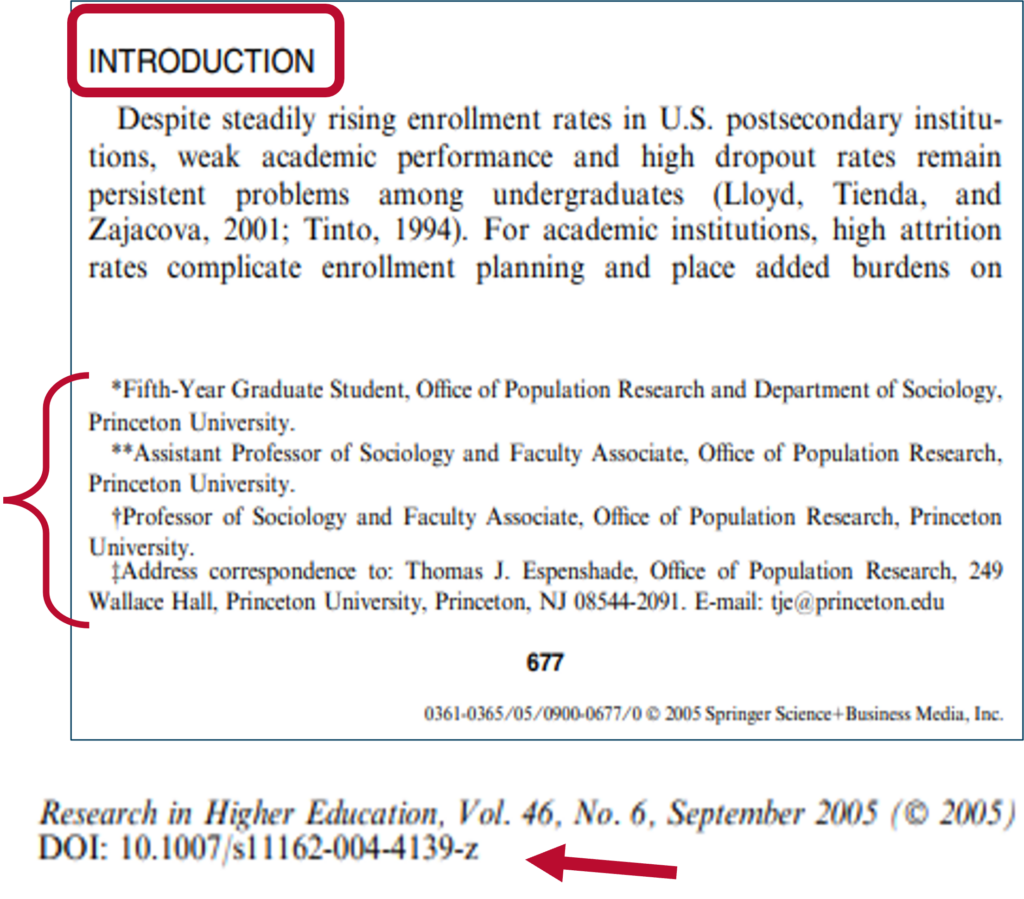
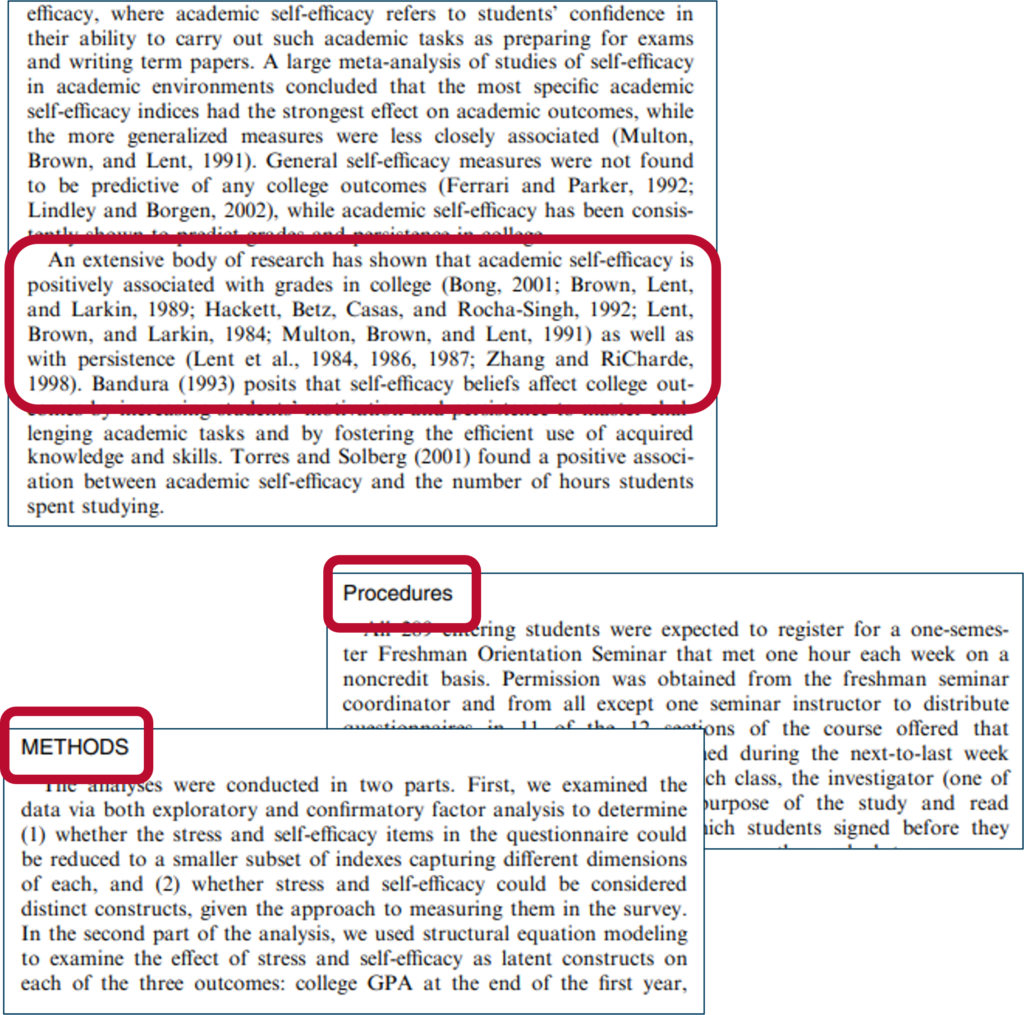
A literature review describes previous research that has been published on the topic. Note the references to other researchers in this example. The section may or may not have the heading Literature Review.
The procedures (or methods) used to conduct the research will be described in the methodology section. This is a very comprehensive portion of the article.
Scholarly articles often contain tables, charts, graphs and other statistical data.
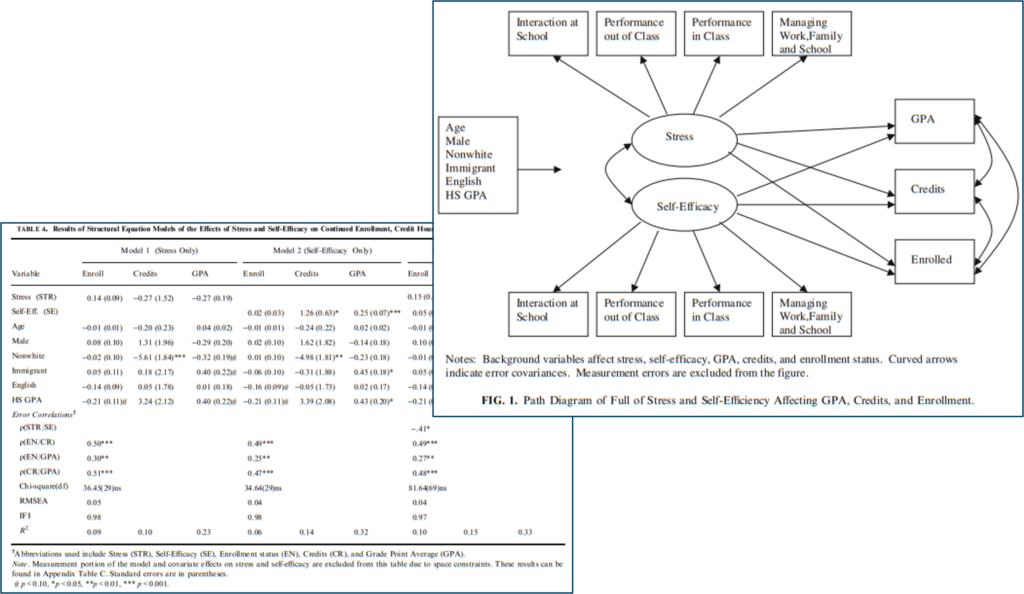
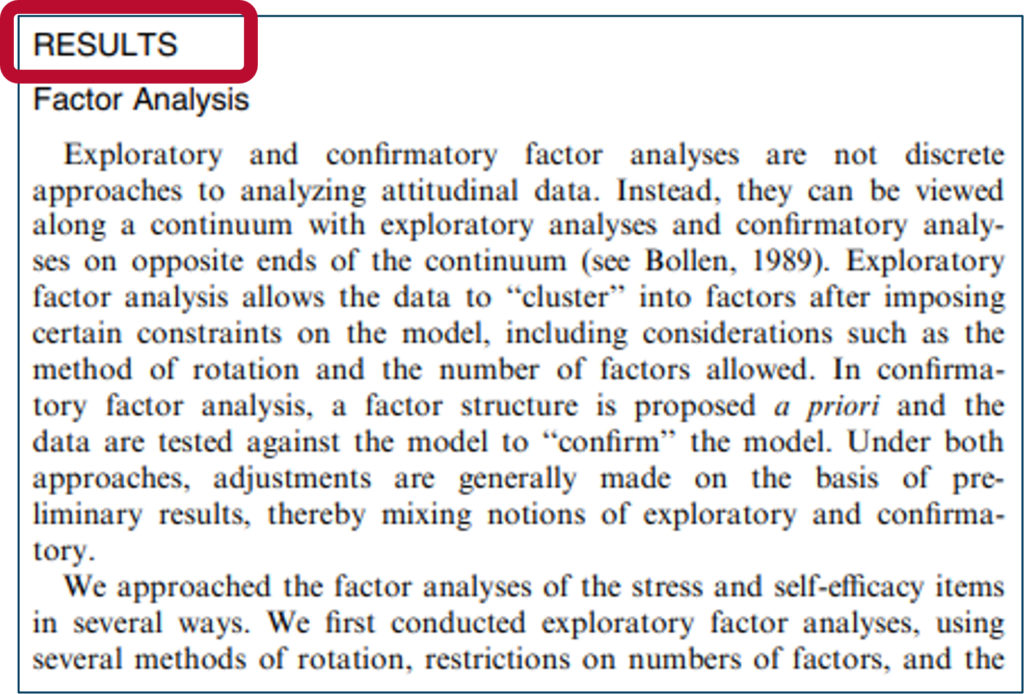
Data that was collected as a result of the research is presented. Often the tables, charts and graphs are part of the results section.
A discussion/conclusion section presents a summary of the results, what the results may indicate, how the research addresses the original hypothesis, any weaknesses of the study, and recommendations for further research on the topic. This section may one of the most useful for locating information to support your own research.
At the end of every scholarly article, you will find the list of references. Each reference corresponds to a source cited in the body of the article.
